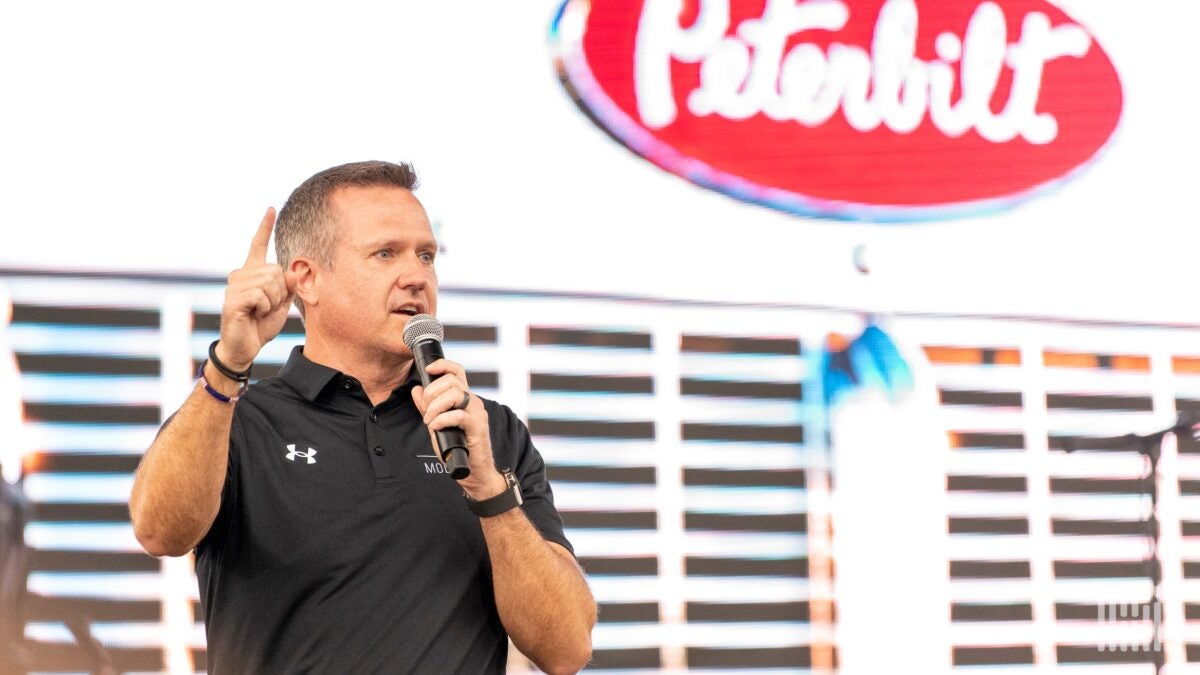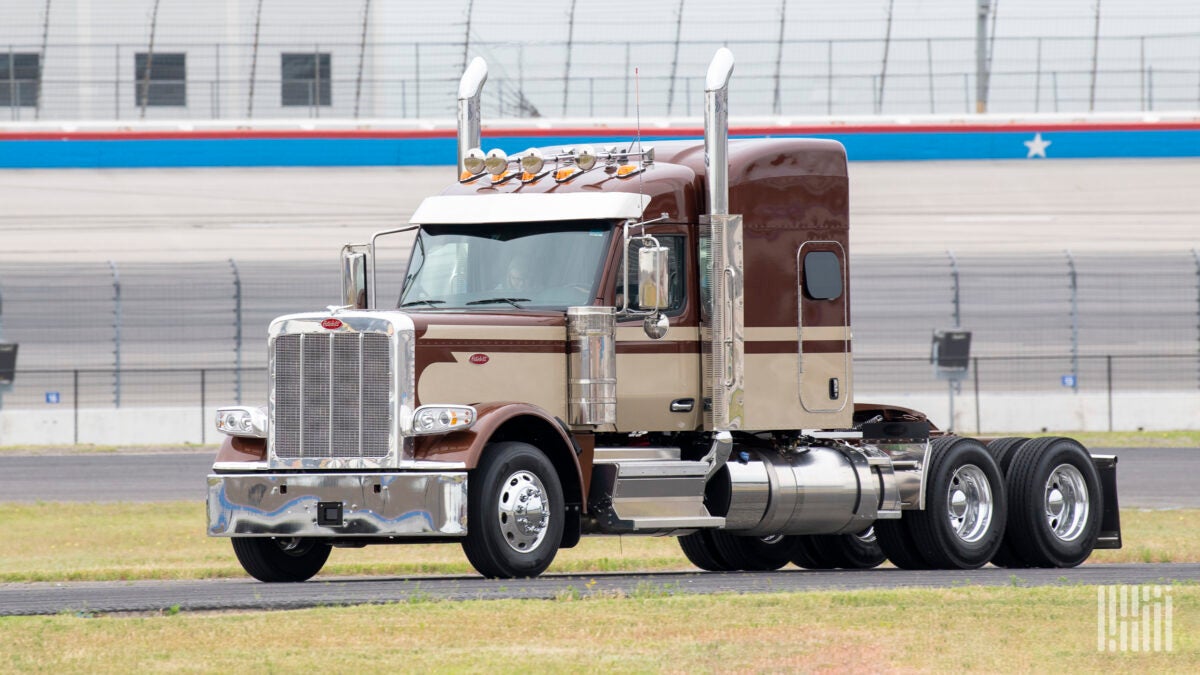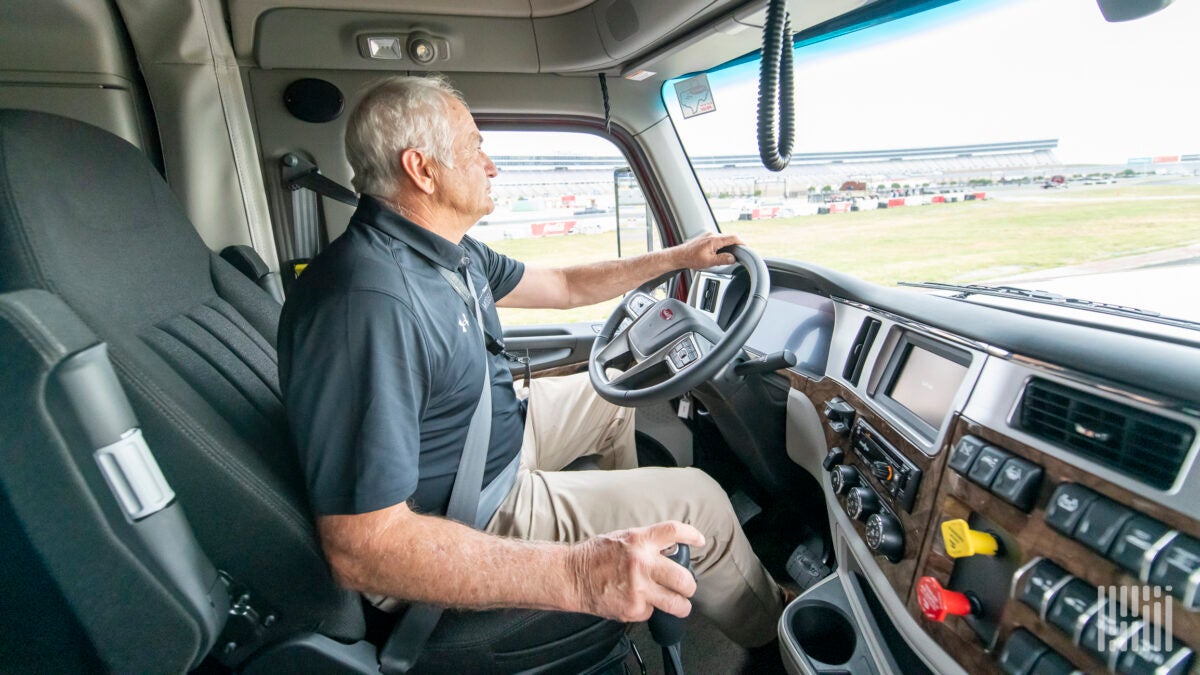FORT WORTH, Texas – Peterbilt Motors could have made a bigger spectacle of launching its high-end, low-volume Model 589. But it is hard to imagine how.
A Peterbilt-only Pride & Class Truck Show of more than 200 heritage models. Renting out the cavernous Texas Motor Speedway. A Southern rock concert. More than 3,000 attendees from VIPs to employees to fans off the street.
Then came the truck, continuing a tradition of long-hood, squared-grille beasts with 7-inch vertical chrome exhausts and 15-inch-diameter chrome air cleaners that lend to the distinctiveness of the trucker’s truck.
The history of Peterbilt’s traditional model stretches nearly 70 years to the 1954 debut of the Model 351. It was followed by the 359, 379 and finally the current-generation 389 introduced in 2007.
“Over time, we have had evolutions of our traditional trucks, not revolutions,” Jason Skoog, Peterbilt general manager, said during the Tuesday evening reveal that included a concert by Palestine, Texas-based Whiskey Myers followed by fireworks lighting the night sky above the track’s jumbotron video screen.
Maybe the last of a breed
On Wednesday, Skoog acknowledged the diesel-powered truck favored by customizers could be on its last model.
“If you go back through our history, it’s every 15 to 20 years [that] we redo the traditional Peterbilt truck. So this will carry us at least into the 2040 time frame,” he said. “You can never predict the future, but I would say ‘quite possibly’” it is the last of an era.

The Model 589 and a Legendary special edition were a decade in the making, in part because the Paccar Inc. brand had other priorities and partly because Peterbilt needed to secure critical components in dimensions to fit a wider cab while staying within overall width tolerances. Peterbilt has revamped its entire heavy- and medium-duty lineup in recent years. Its oldest current product is the 567 introduced in 2013.
Peterbilt cab conversions
Peterbilt has converted the cab of its heavy-duty Model 367 and Model 379 from 6 feet, 2 inches wide to 6 feet, 9 inches in width. The additional space between the seats also allows a driver to access the sleeper cab without turning or twisting.
It allows the plant to build three trucks on a single platform as well. That saves the company engineering and design time and significant capital expense, Peterbilt Chief Engineer Scott Newhouse said.
All bumper options from the 389 are carried over to the 589 but now come with LED running lights. A V-style visor replaces the 389’s rounded one. Bullet-style marker lights across the top are twice as bright as those on the legacy model.
The 589 also offers the Bendix Wingman Fusion suite of safety system technologies that include forward collision warning and lane departure warning.

Small sales but devoted fans
Peterbilt has sold about 110,000 Model 389s since their introduction in 2007. Annual production is a fraction of the flagship Model 579 assembled at the nonunion plant in Denton, Texas. The 589 joins the 579 and the 567 at the 43-year-old facility, where 2,500 workers turn out 201 trucks a day on two shifts.
Sibling Kenworth introduced its chrome-laden W990 three years ago as the high-end “reward truck” that fleets assign to their best drivers. Some 589s will go there, but smaller fleets and owner-operators also buy them in tens and hundreds of copies. Overall Peterbilt sells three trucks to larger fleets to one for smaller operations and individual truckers.
The Model 389 goes away at the end of the year. Production of the Model 589 begins in January with the first 589 trucks getting special interior badging and sequential numbering.

Behind the wheel
Two quick spins in the 589 Legendary around the 1.5-mile Texas Motor Speedway track found a well-mannered and extremely quiet cab with a clear view over its long snout. Side mirrors are 2 inches deeper, providing a better rear view. They are expected to get embedded video camera technology already available on the 579.
Speaking in normal tones was easily understood by someone in the sleeper compartment, not the case on many current trucks. Though engine noise was present, little of it seeped into the cab, providing quietness comparable to near-silent battery-electric electric trucks.
The manual transmission shifted effortlessly, though only about one in four buyers are expected to choose it over the Eaton-Cummins Endurant automated manual transmission. Steering was effortless with a quick-returning wheel even after negotiating one of the track’s turns.
Related articles:
Peterbilt’s Jason Skoog’s math lesson
Peterbilt reveals major redesign of its flagship Class 8 Model 579











